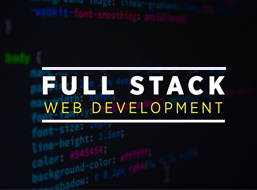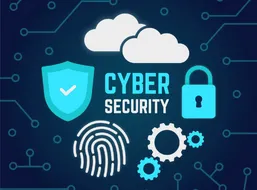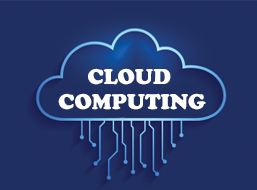When I first decided to level up my cloud skills, I committed to earning AWS and Azure Certification credentials. Passing both exams is no small feat—but with a thoughtful plan, disciplined execution, and the right resources, it’s totally achievable. In this post, I’ll walk you through exactly how I prepared (and still use) a successful strategy for tackling AWS and Azure exams.
---
Understand the Certification Landscape
Before diving in, you need clarity on what you’re aiming for. AWS certification and Azure certification both span multiple levels and domains. AWS offers foundational, associate, professional, and specialty certifications. Microsoft’s Azure certifications similarly have fundamental, associate, and expert tracks covering architecture, administration, data, AI, security, and more.
When I began, I mapped out the AWS certification pathway and compared it to the Azure certifications list. This helped me choose the exams that align with my background and career goals—and avoid wasting effort on ones that weren’t a priority.
---
Step 1: Pick the Right Exams & Set a Timeline
I started by selecting which AWS and Azure exams I’d take first. Because there’s overlap in fundamentals, I chose:
AWS Certified Cloud Practitioner, then AWS Solutions Architect – Associate
Azure Fundamentals (AZ-900) plus an associate-level exam like Azure Administrator (AZ-104)
Once I picked the exams, I set a timeline. For me, 2–3 months per exam was realistic. I scheduled my exam date upfront, so I’d be accountable (you can usually reschedule if needed).
---
Step 2: Deep Dive into Official Exam Guides
Next, I carefully read the official exam blueprint and “skills measured” documents from AWS and Microsoft. These guides are gold mines—they show exactly which domains and topics the exam will test. AWS offers exam guides and sample questions via AWS Skill Builder. Microsoft provides “skills measured” documents, especially for AZ-900 and others, via Microsoft Learn.
By internalizing the exam blueprint early, I prevented wasted study on irrelevant topics.
---
Step 3: Build a Balanced Study Routine
I divided my study into three major pillars:
1. Learn theory — Use structured courses (AWS, Microsoft, or third-party)
2. Hands-on labs — Work with real cloud environments
3. Practice exams & revision — Regularly test myself to find weak spots
For AWS, I used AWS Skill Builder’s practice question sets and labs to simulate real scenarios. For Azure, I followed Microsoft Learn modules and leveraged free sandbox labs offered. I scheduled daily time, even if just 1 hour, and rotated among reading, labs, and practice tests.
---
Step 4: Hands-On Cloud Projects & Real Practice
Theory is only half the battle. I built mini real-world projects—deploying servers, setting up networking, automating tasks. On AWS, I made use of the free tier to deploy services, experiment with IAM, VPC, EC2, S3, Lambda, and more. Many learners recommend the free-tier + labs combo as essential.
On Azure, I launched virtual machines, worked with Azure Active Directory, Storage Accounts, and built simple apps to connect to databases. I also explored Microsoft’s sandbox environments. This practical exposure embedded the concepts.
---
Step 5: Practice Exams, Review, & Iteration
I took timed mock exams every week. These not only tested my knowledge, but also helped me get comfortable with exam timing, question style, and pressure. I used both official practice exams and third-party ones to widen coverage. AWS offers official practice exams to mirror real exam difficulty. For Azure, I used practice assessments and learned how to interpret the explanations behind each answer.
When I got questions wrong, I reviewed the underlying topics, returned to labs, and reattempted similar questions until I cleared them.
---
Step 6: Revision & Weak-Area Focus
In the final few weeks before the exam, I consolidated all my notes, created cheat sheets (key services, differences, best practices), and focused deeply on weak domains. I re-took practice exams, focusing especially on trouble areas. I also joined online communities and forums to see what others were struggling with and shared tips. Many learners cite community discussion as a major boost.
---
Step 7: Exam Day Strategy & Mindset
On exam day, I followed these practices:
Sleep well the night before
Arrive early (if at a test center) or test my environment (if online)
Don’t get stuck: flag and move on, return later
Use elimination techniques when unsure
Keep calm, pace myself
This smooth strategy helped me avoid panic and finish confidently.
---
Conclusion
Preparing for AWS and Azure Certification exams is a journey—one that rewards consistency, hands-on learning, and smart exam strategies. I leaned on exam blueprints, built cloud projects, practiced relentlessly, and refined my weak spots. And if you're wondering where to get structured help: I highly recommend looking into Apponix’s Cloud Computing Training Course, which can provide guided training, mentorship, and a structured path toward AWS certification training and Azure certification support. (Yes, we’re partial, but we’ve seen how structured coaching accelerates success for learners.)
I’d love to see you cross that finish line—certified, confident, and ready to take on cloud roles!
---
FAQs
Q: Which certification should I start with—AWS or Azure?
A: I recommend beginning with whichever aligns more with your environment or goals. If your workplace leans AWS, start there; if Microsoft tools are dominant, begin with Azure. Many people choose AWS Certified Cloud Practitioner or Azure Fundamentals (AZ-900) as foundation exams.
Q: How much time do I need to prepare?
A: It varies by background and effort. Many learners invest 8–12 weeks per exam, spending 5–10 hours per week. But if you're experienced, you may finish faster.
Q: Do I need paid courses or is free training enough?
A: Free training and documentation are great—AWS Skill Builder, Microsoft Learn, lab environments—but paid courses can add structure, mentorship, and curated practice tests. I used both free and paid resources.
Q: Should I focus more on theory or hands-on labs?
A: Both are vital—but labs often cement understanding better than theory alone. I’d lean 60% hands-on, 40% theory in your daily learning mix.
Q: Are AWS and Azure certifications worth it?
A: Absolutely. They validate your skills, boost credibility, and often help you land cloud roles. They show employers you’re serious about mastering cloud technologies.




